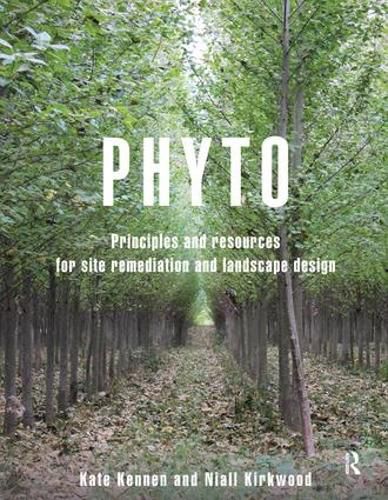Readings Newsletter
Become a Readings Member to make your shopping experience even easier.
Sign in or sign up for free!
You’re not far away from qualifying for FREE standard shipping within Australia
You’ve qualified for FREE standard shipping within Australia
The cart is loading…






Phyto presents the concepts of phytoremediation and phytotechnology in one comprehensive guide, illustrating when plants can be considered for the uptake, removal or mitigation of on-site pollutants. Current scientific case studies are covered, highlighting the advantages and limitations of plant-based cleanup. Typical contaminant groups found in the built environment are explained, and plant lists for mitigation of specific contaminants are included where applicable.
This is the first book to address the benefits of phytotechnologies from a design point of view, taking complex scientific terms and translating the research into an easy-to-understand reference book for those involved in creating planting solutions. Typically, phytotechnology planting techniques are currently employed post-site contamination to help clean up already contaminated soil by taking advantage of the positive effects that plants can have upon harmful toxins and chemicals. This book presents a new concept to create projective planting designs with preventative phytotechnology abilities,phytobuffering where future pollution may be expected for particular site programs.
Filled with tables, photographs and detailed drawings, Kennen and Kirkwood’s text guides the reader through the process of selecting plants for their aesthetic and environmental qualities, combined with their contaminant-removal benefits.
$9.00 standard shipping within Australia
FREE standard shipping within Australia for orders over $100.00
Express & International shipping calculated at checkout
Phyto presents the concepts of phytoremediation and phytotechnology in one comprehensive guide, illustrating when plants can be considered for the uptake, removal or mitigation of on-site pollutants. Current scientific case studies are covered, highlighting the advantages and limitations of plant-based cleanup. Typical contaminant groups found in the built environment are explained, and plant lists for mitigation of specific contaminants are included where applicable.
This is the first book to address the benefits of phytotechnologies from a design point of view, taking complex scientific terms and translating the research into an easy-to-understand reference book for those involved in creating planting solutions. Typically, phytotechnology planting techniques are currently employed post-site contamination to help clean up already contaminated soil by taking advantage of the positive effects that plants can have upon harmful toxins and chemicals. This book presents a new concept to create projective planting designs with preventative phytotechnology abilities,phytobuffering where future pollution may be expected for particular site programs.
Filled with tables, photographs and detailed drawings, Kennen and Kirkwood’s text guides the reader through the process of selecting plants for their aesthetic and environmental qualities, combined with their contaminant-removal benefits.